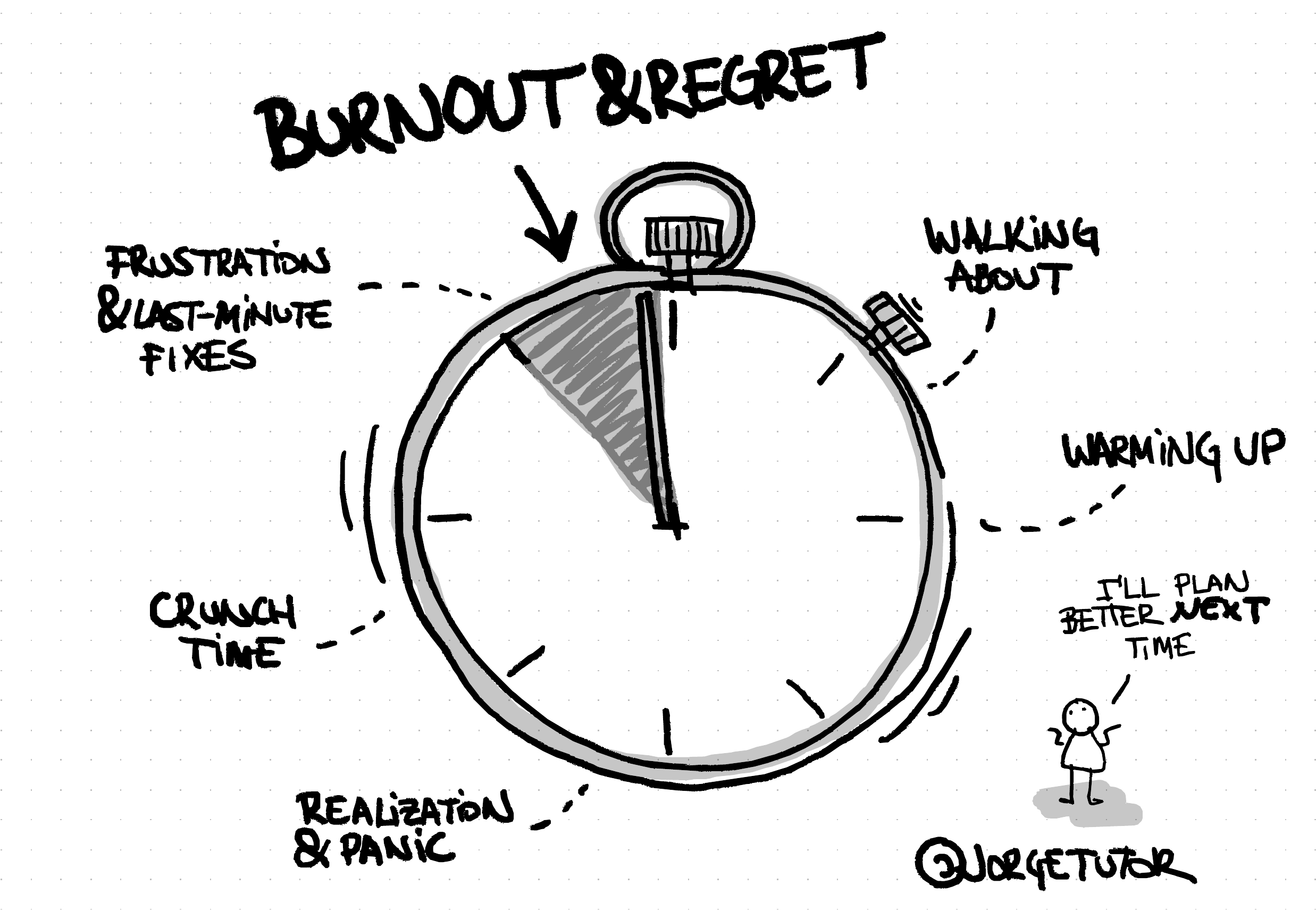I love working in Agile. I enjoy the freedom to explore solutions. Agile development embraces flexibility—things evolve, timelines shift, and requirements adjust as we learn. That fluidity fosters innovation.
But then, reality hits. A hard deadline appears. An RFP that must be submitted by next week. A marketing campaign launch date set in stone. A new product scheduled for release that cannot be postponed. Suddenly, time is not a flexible concept—it’s a rigid constraint. And when that happens, timeboxing isn’t just an option; it’s the option.

The Agile Misconception: Flexibility ≠ No Deadlines
Some believe agile means pushing deadlines endlessly to accommodate iterations. That’s a myth. Agile thrives on timeboxing. Sprints are timeboxed events. Standups, planning meetings, and retrospectives all happen within strict time limits. Agile doesn’t eliminate deadlines; it helps teams deliver within them by breaking work into focused timeframes.
The real challenge is managing open-ended, undefined tasks where there’s no clear endpoint. How do you timebox something without an strict or blurred scope?
The Leadership Dilemma: When Time Runs Out
Think of it like a football match. Once the final whistle blows, any goals scored after that don’t count. No matter how close you were to scoring, the game is over. Timeboxing works the same way, when the deadline hits, you have to deliver with what you’ve got.
As a manager, you’ll face situations where team members push for more time. They want to perfect their work. They feel unfinished. But sometimes, extending the deadline is not an option (and working overtime isn’t the solution either).
The key is managing expectations from the start. Break down tasks, set clear milestones, and regularly track progress. That way, there’s no last-minute panic. Build buffer time because unexpected issues will always happen., when blockers arise, you’ll have time to react rather than scramble.
The Chaos vs. Control approach
Timeboxing isn’t about rushing—it’s about focusing. It forces clarity, drives accountability, and ensures delivery within real-world constraints.
The Chaotic Deadline
- Exploration & Disengagement (Walking About) – The team starts casually, discussing ideas but not setting clear objectives. Tasks remain undefined, and no urgency is felt.
- Slow & Unstructured Progress (Warming Up) – Work begins, but at an inconsistent pace. There are distractions, meetings without clear outcomes, and little sense of priority.
- Realization & Panic (Gaining Momentum, Too Late) – The deadline starts looming. The team suddenly realizes they are behind. People start rushing, but bottlenecks and dependencies slow them down.
- Pressure & Scrambling (Crunch Time) – There’s no buffer left. People work late, errors pile up, and stress takes over. Team members become irritable, making communication ineffective.
- Frustration & Last-Minute Fixes (Everything is Rushing) – The team is overwhelmed, with unfinished work. Quick patches and last-minute solutions are implemented, leading to subpar quality.
- Burnout & Regret (After the Whistle) – The deadline hits with an incomplete or messy result. The team is exhausted, and morale is low. They vow to “plan better next time” but never break the cycle.
The Smooth Deadline
- Structured Start (Walking with Purpose) – The team kicks off with clear objectives. They define the Minimum Viable Outcome (MVO) and break tasks into actionable steps.
- Steady & Aligned Progress (Focused Work) – Work is structured, with small milestones set for each timebox. Regular check-ins ensure tasks stay on track.
- Early Risk Identification (Gaining Control) – Potential blockers and dependencies are identified early, allowing time for resolution. The team is proactive, not reactive.
- Controlled Intensity (Smart Crunch Time) – As the deadline nears, work intensifies, but without panic. Tasks are completed in priority order, leaving time for refinements.
- Final Adjustments & Quality Check (Finishing Strong) – The last stretch is used for testing, validation, and final improvements. The team works efficiently without rushing.
- Peaceful Delivery & Reflection (Calm After the Whistle) – The project is completed on time. The team celebrates, reflects on lessons learned, and feels proud of their work.
Techniques for Timeboxing Open-Scope Tasks
- Define the Minimum Viable Outcome (MVO) – Identify the smallest, most essential deliverable that provides value. This prevents scope creep and ensures tangible progress.
- Break Down Ambiguity – Split the task into smaller, manageable components. Even if the end goal is unclear, completing specific sub-tasks keeps things moving.
- Set Clear Boundaries – Limit work to what can realistically be achieved within the timebox. No new objectives should be added mid-way.
- Work in Internal Iterations – The first iteration should cover the basics and identify blockers. Later iterations refine and expand. This avoids last-minute chaos.
- Raise Dependencies Early – If an external factor could delay progress, escalate it immediately. The sooner it’s addressed, the more time you have to adjust.
- Avoid Parkinson’s Law – Work expands to fill the time available. A focused timebox prevents unnecessary over-engineering and perfectionism.
- Mind the Clock, But Don’t Stare at It – Focus on tasks rather than constantly watching the time. Check the clock during breaks to stay on track without inducing stress.
- Transparency is Key – Silence is a warning sign. If there’s no regular progress update, expect a last-minute scramble. Frequent check-ins prevent surprises.
Timeboxing isn’t about control, it’s about empowerment. When used effectively, it gives teams structure, clarity, and the confidence to deliver on time without burnout.
How do you handle time constraints while keeping your team motivated?